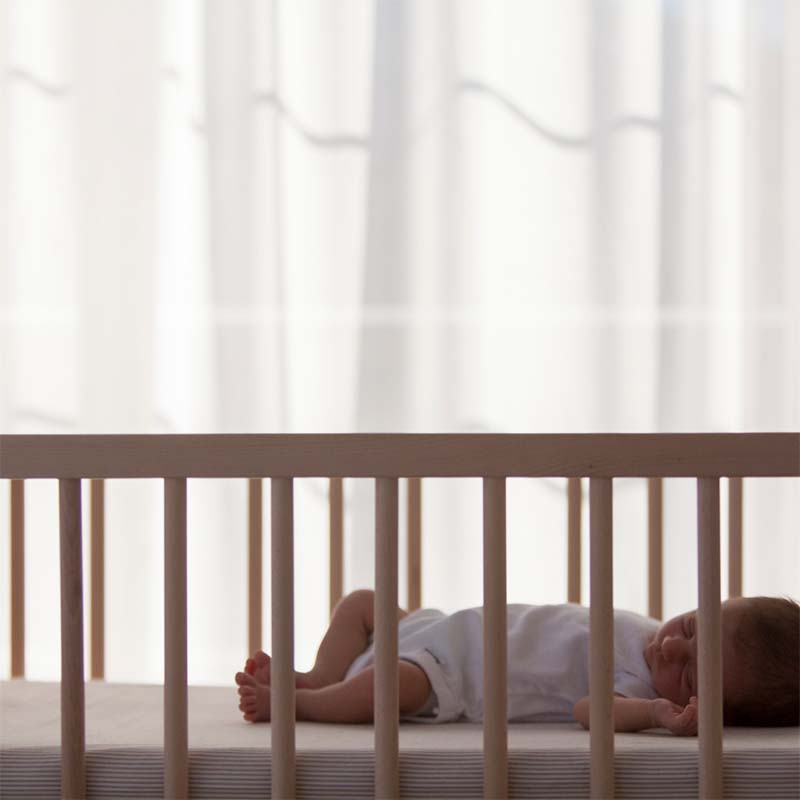
It doesn’t matter if your baby or child sleeps in your room or their own, the optimal environment for them to get the sleep they need is a room that’s dark at night, dim/dark during the day, quiet but not dead silent, and not too warm or cold. Let’s talk about why.
Overnight, the first thing your little one needs is a dark, pitch-black room. Humans produce a hormone called ‘melatonin’ when they’re in a dark environment. This hormone helps our bodies know when it’s time for us to have a long stretch of sleep overnight. Babies and children need to sleep in a pitch-black room to support melatonin production and ensure they get enough sleep between bedtime and the morning. This means no light coming in from windows or around doors, and definitely no nightlights!
During the day, babies and children do not need to go back into a pitch black room for their naps. The sleep environment should be more of a dim / dark grey so the baby or child knows it’s day and nap time versus night and a bigger stretch of sleep time. Usually, closing the curtains is enough to make the space dark-grey, which is perfect for a day nap.
You also need to think about any noise in or around your baby or child’s sleep space. They should be able to sleep with ambient noise – sounds you’d expect to hear around a home, but you need to avoid loud noises that will disturb them while they sleep. Many families and some sleep consultants believe an artificial white noise machine is helpful to block out noise in the home, but using one will soon become a hindrance as your baby or child learns to depend on it to sleep rather than following their natural sleep cues. I advise all the families I support to avoid using these sleep aids.
The third feature of an optimal sleep environment is warmth. Keeping your little one cool enough so they don’t overheat is crucial for their safety, but it’s also important to make sure they don’t get cold. One of the most common reasons babies and children sleep poorly, in the cooler months but also during summer, is that they aren’t warm enough in bed. You might have come across guidelines that specify optimal room temperatures and how to dress your little one in each. This seems straightforward, but the trouble with these guidelines is they often underestimate how much warmth babies and children need when sleeping, and they don’t take into account all the variables you need to consider when creating a safe sleep environment – things like room size, house size, insulation in the home, climate, and so much more.
If you’re having trouble with creating the right sleep environment, you can’t go past my bestselling Safe Sleep – Room Temperature and Sleepwear Guide eBook. Parents call this eBook a “lifesaver” and “a total gamechanger”, and once you get your hands on it, you’ll see why!
The information in this Blog Article relates to healthy babies and children with no undiagnosed, untreated medical issues or concerns. If you have any concerns about the health of the baby or child in your care, please see their GP or paediatrician.
For more sensible, straightforward, safe advice and resources on getting your family the sleep you all deserve, explore my website – sleepbysteph.com.au
Connect with Steph and stay up to date with Sleep by Steph's latest offerings.